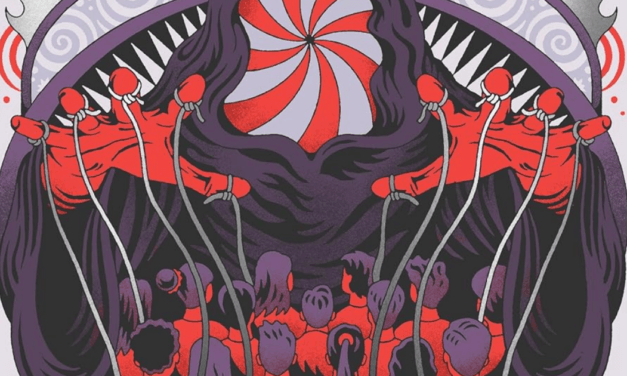A book on mankind’s inhumanity to fellow human beings can never come often enough, as witness the genocide presently taking place in Darfur. Suppression can be as simple as letting people starve—as in the Sudan—or in accelerating their departure via the horrors of torture and execution. This is terrible enough when ordered by secular dictators, and yet in the Middle Ages, it was none other than the church that revealed to the world the exquisite forms of torment that could bring people to “confess” even if they were innocent. This was a specialty of the agency known as the Inquisition.
To this day, the very term evokes scenes of black-hooded inquisitors bending over their victims with instruments of torture under the ruddy glow of braziers, often using fire itself in the course of inducing agony. In The Grand Inquisitor’s Manual, Jonathan Kirsch lays it all out in well-researched detail, never using ugly sensationalism to win his reading audience, but letting the excruciating facts speak for themselves.
Beyond all debate, the Inquisition is the ugliest blot on the entire history of the Christian church. The once-persecuted people of God, centuries later, became persecutors themselves in a maniacal drive to save “heretics” from hell by giving them a foretaste of that destination via torture. Kirsch traces it all from the earliest beginnings of perceived heretical threats to the medieval church by the dualistic Bogomils and the Cathars or Albigensians. The powerful Pope Innocent III responded by declaring a crusade against the latter in the earliest 1200s. But how do you determine who was an Albigensian heretic? “Kill them all,” advised one bishop, “the Lord will know His own.”
From that point on, the Inquisition pursued its lurid business. Its full title was “The Holy Office of Inquisition into Heretical Depravity,” and it exists at the Vatican to this day as simply “The Holy Office.” (Its previous director was Cardinal Joseph Ratzinger—the present pope, Benedict XVI—who, however, does not believe in torture!)
Kirsch takes the reader through its three main phases: (1) The Medieval Inquisition (mid-thirteenth century) targeted Cathars, Waldensians, the Knights Templar, spiritual Franciscan priests, and anyone involved in sorcery and witchcraft. (2) The Roman Inquisition (sixteenth century) aimed at Protestants and Freethinkers in Italy, including Giordano Bruno and Galileo. (3) The Spanish Inquisition (1478 to 1834) was far and away the most notorious of the three. It sought out conversos, Jews who had converted (many perforce) to Christianity but were suspected of relapsing into Judaism, as well as Muslims and Freemasons.
Kirsch demonstrates, however, that the Inquisition afflicted many other areas of the world, including Portugal and the colonies the European powers established in the New World. Nor was England exempt, which saw anti-Semitic riots, nor France, as witness the tragedy of Joan of Arc, the maid of Orleans. Even in the Americas, the fanaticism of religion lay behind that horrid miscarriage of justice called the Salem witch trials.
The inhumanity of the Inquisition has had modern secular counterparts as well, as Kirsch easily demonstrates in the case of Hitler’s Germany or Stalin’s Russia. Torture to elicit information, then, comes as early as the ancient world—the Romans were masters at it—and extends up through today’s headlines.
Forms of Torture. Torture has been persistent for centuries, but that the medieval church should have used it remains a striking scandal to the present day. There are authors who try to diminish the horror, claiming that the number of victims in the Inquisitions has been exaggerated. They also point out that not everyone was burned at the stake: there were milder punishments such as enforced devotions, going on pilgrimages, and the like. Generally, however, it seems a failed effort, and condoning any aspect of such institutionalized terror should be enough to send the revisionist historian to a psychiatrist. There he will be in good company with the darkened souls who try to deny the Holocaust.
Various medieval manuals on torture, written by Dominican and Franciscan inquisitors, show the methods involved. The victim was brought by candlelight through spooky corridors to the gruesome torture chamber, where he was carefully shown the instruments of torment, a terror that brought some to “confess” on the spot. Men or women, as well as boys over ten or girls over nine were then stripped of their clothes and tied to a table.
Water and fire were the simplest of the tools employed. Water was poured down someone’s throat in quantities to distend the stomach while holding the nose. Fire was regularly applied to the soles of the feet and red-hot tongs to nip at the naked body. Both of these were carryovers of the old medieval ways of deciding guilt or innocence: ordeal by water or fire.
Many other creative methods were also in use, such as the strapado, a rope and pulley apparatus affixed to the ceiling. The victim’s hands were tied behind his back and he was hoisted up but then suddenly dropped, causing excruciating pain. Whips, of course, were always at the ready, as were the agonies of the wheel and the rack. The stivalleto involved hammering wedges of wood or iron between the legs of the victim and the wooden splines tightly imprisoning them. Clearly, many of the torturers were sadists, some getting a perverse sexual delight out of inflicting this horror on the gender of their choice.
The Infamous “Third Degree.” Whence comes the term, “the third degree”? From the Inquisition, of course! It was all a matter of the nature and duration of the torment. The first degree involved cutting off the victim’s clothing and showing him the instruments of torture. The second started the torture itself, to be sustained no longer than the time it took for an inquisitor to recite a single Ave Maria or Pater Noster—probably about one minute. The third degree was full torture itself, and without such time limits.
But there were more! The fourth degree called for more torture yet, such as jerking the ropes of the strapado, with its inevitably horrendous agony. And finally, in the fifth degree— reserved for the heroic holdouts—there were no limits. Limbs might be torn out of sockets, with the victims perishing on the tables of torture, even though it was not supposed to go that far.
Was There No Escape? Rarely, a victim might escape through the same ingenious methods used by any prisoners before and since. For those facing the Inquisition, survival was also possible if the victim confessed his sin or heresy, which was the chief goal of the tormentor. This did not always work, however.
The inquisitor often suspected that the “confession” was not sincere, and made only to spare one’s own life. Kirsch lists many instances of poor girls and other victims who out of sheer terror were ready to confess to anything, but they were doubted. Even if a confession was made, it had to be proven by the victim naming others who were also guilty so that they too might be arrested. Failure to do so rendered a confession suspect and it was not accepted.
The worst “sin” of all was to recant a confession. The death penalty was automatic in that instance, as witness the famous case of Joan of Arc in France, or Thomas Cranmer in England. Execution usually took place by burning at the stake, and such occasions were high theater in the Middle Ages, usually taking place in the town square in front of the cathedral and attended by huge throngs of people. Hollywood has it right in this instance.
Clergy were always attending victims on their way to the stake, however, prepared to hear a confession that could save their lives. It did, in some instances, but not all.
The Spanish Inquisition. Of all the vicious venues where terror in the name of God was perpetrated, none exceeded that of the Spanish Inquisition, presided over by the Grand Inquisitor himself, Tomas de Torquemada, whose maniacal anti-Semitism, endless pursuit of heresy, and mastery of torture remain a stench in the nostrils of the world. He detested “secret Jews,” that is, the conversos who had converted to Christianity but remained Jewish at heart. And what were their hallmarks? Washing one’s hands before prayer, calling a child by some Old Testament name like David, and eating a porkless meal. Changing one’s undergarments on Saturday, however, was a dead giveaway!
Moderation was unknown in the Spanish Inquisition. If a condemned heretic confessed at the last moment, he or she was treated “mercifully,” as Kirsch writes, graphically:
The victim would be strangled with a garrote before being burned. Sometimes a bag of gunpowder might be hung around the neck of the victim, both as a gesture of mercy—once ignited by the mounting flames, the resulting explosion would bring his ordeal to a quick end and possibly even take off his head—and as a pyrotechnic effect to please the crowd. Then, at last, the executioner put the torch to the brushwood and charcoal that had been neatly arranged around the stakes, igniting the fuel at each of the four corners to ensure that the flames burned evenly on all sides. (p. 200)
Lessons for Today? It is very difficult for contemporary Christians to believe that this sadistic saga of agony could ever have happened. So easily—and justifiably—we fault Islam for its violence and terrorism, forgetting that we also went through that phase hundreds of years ago. It has often been argued that Islam needs the equivalent of our Reformation if it is to come to terms with the freedom and progress we enjoy today in the West. There must be some truth to this, since it was the success of the Reformation that broke the spiritual stranglehold of the one branch of Western Christianity demanding absolute subservience to its doctrines to avoid horrendous consequences.
It is also, however, a warning that whenever any religion, denomination, political party, or government occupies a position of overwhelming majority, it may indeed be tempted to silence all opposition in a manner not too different from that of the medieval inquisitors. Salvation may lie in diversity.
—Paul L. Maier
Paul L. Maier, Ph.D., is professor of ancient history and former Lutheran campus pastor at Western Michigan University. He is a graduate of Harvard University and Concordia Seminary, St. Louis and a Fulbright Scholar at the Universities of Heidelberg, Germany, and Basel, Switzerland. He is the author of sixteen books of nonfiction and fiction.








